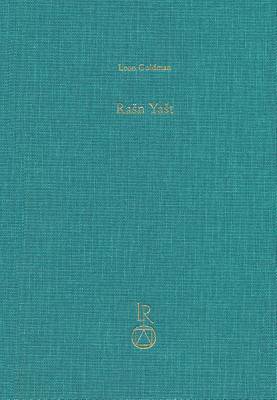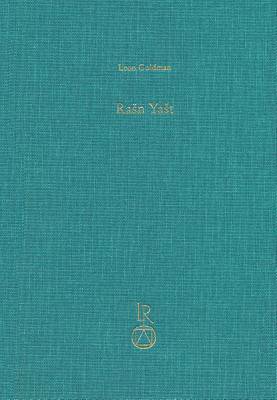
- Retrait en 2 heures
- Assortiment impressionnant
- Paiement sécurisé
- Toujours un magasin près de chez vous
- Retrait gratuit dans votre magasin Club
- 7.000.0000 titres dans notre catalogue
- Payer en toute sécurité
- Toujours un magasin près de chez vous
Description
For the first time, this work treats in a comprehensive manner the Rasn Yast, or 'Hymn to Justice'. The Rasn Yast stands in praise of the Zoroastrian deity Rasnu 'Justice' and belongs to the group of religious texts known as the Avesta - a collection of compositions in the ancient Iranian language of Avestan. Although the Rasn Yast, like all of the Avesta, is generally assumed to have been committed to writing either during or shortly after the Sasanian era (224-651 CE.), its verses were probably composed during the early first millennium BCE. The present monograph contains an English translation of the Rasn Yast supported by a critical edition of the Avestan text. The latter is based on the testimony of thirteen manuscripts, of which nine were newly collated. Variant readings from the manuscripts are recorded in a detailed and easy to read apparatus. Matters of a philological or text critical nature are taken up for discussion in an accompanying commentary and all forms appearing in the Rasn Yast are parsed in the text's glossary. In addition, this book includes three introductory chapters that aim to elucidate the key themes of the Rasn Yast. The first chapter concerns the titular divinity Rasnu and explores his role as a judicial figure, both in this world and the hereafter. The second chapter explicates the cosmographic scheme which is uniquely preserved in the Hymn to Justice and argues this map of the universe encodes numerical and spatial patterns. The third chapter draws upon Avestan and Middle Persian sources to give an in depth account of the use of ordeal rituals in ancient Iran - a practice with which Rasnu is intimately associated and which is repeatedly mentioned in the Rasn Yast. This work is intended for specialist and more general audiences alike, and is principally aimed at those with interests in Indo-Iranian philology, Zoroastrianism, ancient Iran and comparative religion.
Spécifications
Parties prenantes
- Auteur(s) :
- Editeur:
Contenu
- Nombre de pages :
- 272
- Langue:
- Anglais
Caractéristiques
- EAN:
- 9783954901081
- Date de parution :
- 16-09-15
- Format:
- Livre relié
- Format numérique:
- Genaaid
- Dimensions :
- 157 mm x 239 mm
- Poids :
- 362 g

Seulement chez Librairie Club
+ 352 points sur votre carte client de Librairie Club
Les avis
Nous publions uniquement les avis qui respectent les conditions requises. Consultez nos conditions pour les avis.






